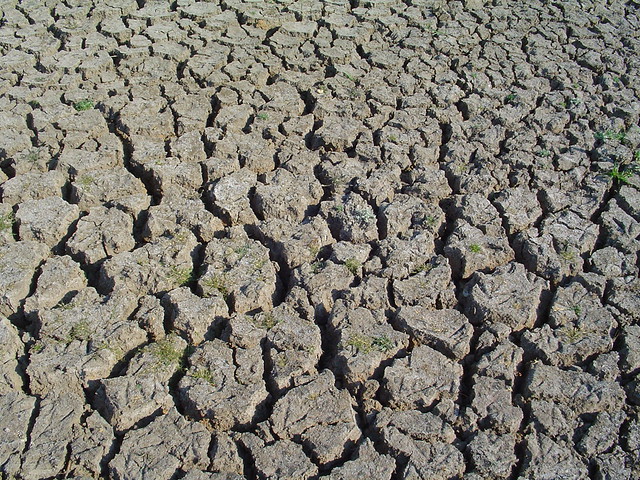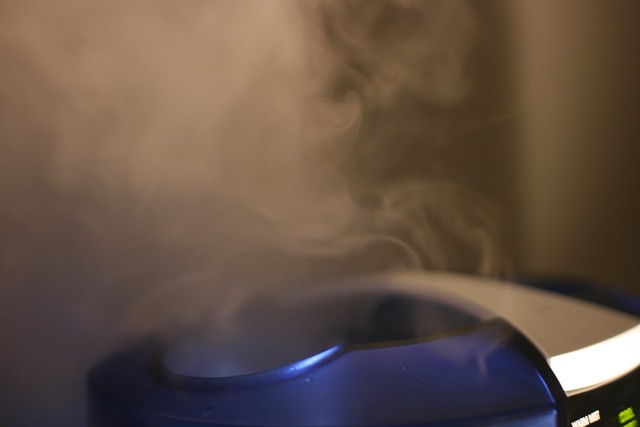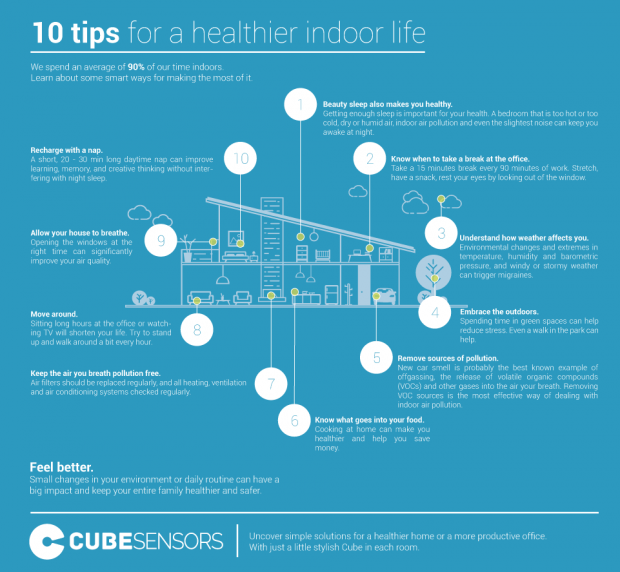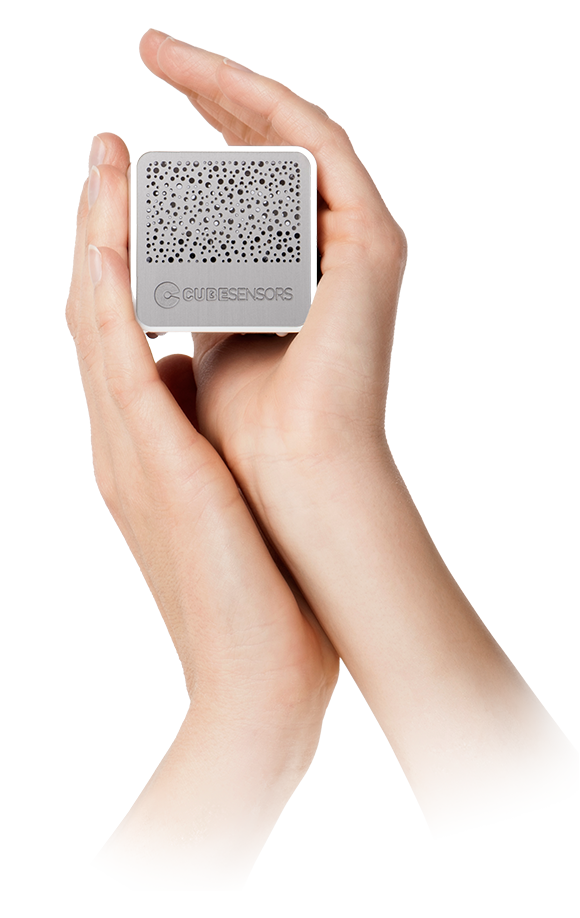Before getting CubeSensors, I could tell it was time to bring out the humidifier when petting my cat started generating sparks from all the static electricity in the dry air. And that was just part of the problem. Dry air, common in cold winter months, can also cause dry skin (which makes wrinkles more prominent!), irritated eyes, nosebleeds, and can even worsen allergies or asthma. On top of all that, flu and other viruses find it easier to spread and survive in dry conditions.
Luckily, there’s a simple solution to these woes that will keep you healthier and better looking throughout winter. The easiest and fastest way to raise your relative humidity above the recommended minimum of 30% is to use a humidifier.

Lower your heating bill with the right humidity
Humidifiers come in all shapes, sizes and price ranges. Most common are portable humidifiers that are used to add moisture to the air in a single room. If you live in a climate with low humidity throughout the year, you might also consider installing a whole-house humidifier that connects to your building’s HVAC system and maintains the right humidity throughout the house.
When considering cost, keep in mind that a good humidifier could help you lower your heating costs. You’ll feel warmer when the relative humidity is between the recommended range of 40% to 50%.
Tips for choosing the right humidifier

Portable humidifiers can produce either cold or warm mist. Warm mist humidifiers heat the water before releasing moisture into the air. Which is great for destroying bacteria in the water. But not so great if you have children around, as the warm mist can cause burns. That’s why cold mist humidifiers are a safer choice for most families.
The downside of cold mist humidifiers is that they can spread mold and bacteria into the air if the water or the humidifier isn’t clean.
There are three basic types of cold mist humidifiers. Impeller humidifiers use high speed rotating disks to release water drops, while ultrasonic humidifier use ultrasonic vibrations to create their cool mist. These two types of humidifiers can release white dust into the air; a lesson I learned the hard way after opening an iMac that was sharing the room with an ultrasonic humidifier. White dust is the byproduct of water minerals and not harmful by itself, just inconvenient. To avoid white dust you can either get a humidifier with a demineralization cartridge or use distilled water instead of regular tap water.
The third type of cold mist humidifiers are evaporative humidifiers, which include an absorbent wick and a fan that blows air onto the wick to help water evaporate faster.
Keep your humidifier clean and monitor your humidity
Regardless of which type of humidifier you choose, it is very important to replace the water and filters regularly, and clean the device according to the manufacturer’s instructions. Newer models often include antibacterial technology that can help you maintain the water clean for longer.
See the humidifier’s specifications to see how much area they can cover. Usually it’s best to choose a humidifier that promises to cover a bigger area than that in your room. When placing portable humidifiers in your home, consider using them in rooms where you spend most of the time. For instance, a good place to have your humidifier is your bedroom or your children’s bedroom, where dry air affects us the most.
Just make sure not to keep your humidifier running when it’s not needed. Dry air isn’t good for you, but neither is high humidity, so don’t turn your home into a swamp. Your relative humidity shouldn’t climb over 55% or you might make it too comfortable for mold to start growing, so do keep an eye on relative humidity levels to maintain a healthy living environment at home or work.
Who doesn’t like the holiday season? All the good food, gifts, parties, decorations, candles, the delicious smell of baking, a house full of guests, making big plans for the new year … It’s all very exciting, but surprisingly unhealthy in terms of indoor air pollution! Let’s take a look at some of the most common pollution Grinches and how you can prevent them from ruining the holiday cheer.
Choose candles that won’t cause asthma attacks during dinner

Candles are great companions for the winter holidays. They warm our hearts in dark winter nights, add that special touch to your decorations, and can even fill your house with the scent of cinnamon. In fact, 35% of all candle sales are made during the winter holidays! Unfortunately, candles can also be good at polluting your air.
The worst offenders, according to research presented at a meeting of American Chemical Society, are candles made from paraffin wax. Most of the candles on the market are made out of paraffin wax and scented with synthetic fragrances, which are both derived from petroleum.
Petroleum-based candles emit a mix of VOCs such as toluene and benzene that might even cause cancer during prolonged exposure. Other hydrocarbon chemicals that can irritate respiratory tracts and even trigger asthma are also emitted by such candles and can cause trouble much sooner.
Soot is another thing that candles release into the air we breathe. Again, petroleum-based candles and scented candles produce more soot. An easy precaution is to keep candle wicks trimmed short.
All this doesn’t mean that you should stop using candles all together. For better air quality, choose candles made from soybean, palm, hemp, or beeswax. The later might be the most responsible choice, as it doesn’t derive from GMOs like some soybean candles and doesn’t destroy rain forest like the ones made out of palm oil. If you want your candles to be scented, find ones that use essential oils.
Take good care of your fireplace

A wood burning fireplace certainly helps to set the holiday mood. But it’s got all of the problems of burning candles, only on a larger scale. The Environmental Protection Agency offers a lot of guidelines on how reduce air pollution caused by fireplaces and wood stoves.
You can do a lot by choosing the right wood to burn. For instance, hardwood burns more slowly and evenly, producing less smoke and more heat. Small and hot fires will cause less pollution. Don’t forget to keep your chimney in good condition, and keep an eye on the air quality in your home when burning wood.
Decorations and shiny new stuff
Another thing that might be ruining your holidays’ air quality are all the Christmas decorations and gifts that you’re brining in. We certainly wouldn’t want you to get rid of that. But you might be more mindful of the materials you choose to avoid the offgasing of VOCs in the air. Or make your own decorations at home, with simple materials that aren’t loaded with paint and other chemicals.

Don’t forget about ventilation, even when it’s cold outside!
One key thing that can help you maintain good air quality throughout the holiday season is proper ventilation. It can be easy to forget to open the windows thoroughly with a house full of guests, especially if it’s cold outside. Which just makes air pollution worse, especially in tightly sealed modern homes. You can easily make everyone feel better if you properly ventilate before your guests start arriving and before going to bed, to clear up all the air pollution that has built up during celebrations.
So, while holidays can put more stress on your indoor pollution, you can do a lot by making the right choices when buying holiday supplies and by keeping an eye (or Cube) on your air quality. By doing so, you can open the windows before allergies, headaches or even asthma ruin your dinner and maintain good spirits throughout the day.
Even if you live an active life, you still spend most of your days indoors. After all, don’t we all know that “there’s no place like home”? Yet even the most cozy homes can have high levels of indoor air pollution and make us sick in various ways if we don’t pay attention to what’s going on inside.
We’ve built CubeSensors to help you discover important aspects of your indoor environment that negatively affect your health or productivity. Fixing some problems, like extensive mold or insufficient insulation, can be expensive. Yet there are many smaller changes you can make in your environment or daily routine that can help you make the most of your time spent indoors.
Explore some of our favorite tips below to feel better in all rooms of your home or office. (Click image to view full size.)







